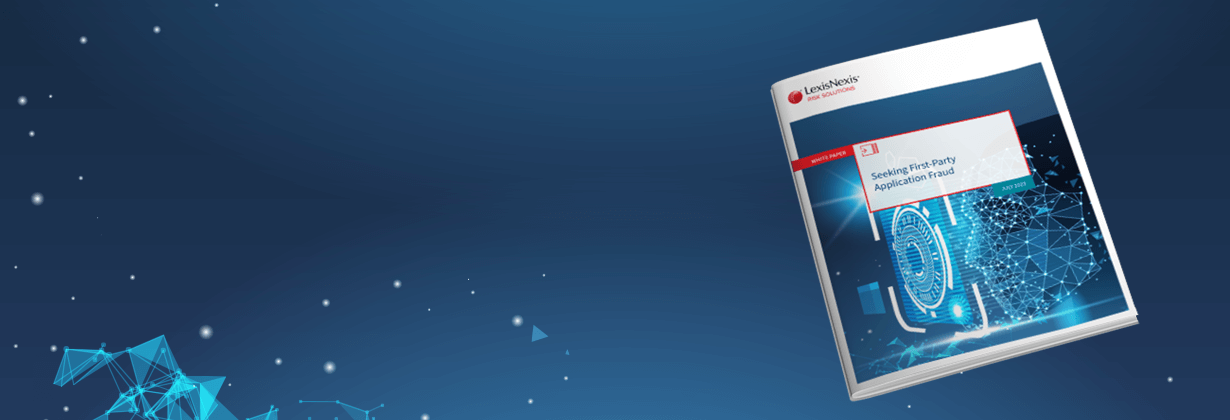
First-Party Fraud, Synthetic Identity Fraud or Credit Risk?
Malicious First-Party Application Fraud Makes Up 31% of Sample
Learn how to detect and mitigate first-party application fraud better.

First-party application fraud often disguises itself as synthetic identity fraud or a credit risk problem.
The difficulty in discerning first-party application fraud hampers mitigation efforts across industries, leaving organizations ill-equipped to implement sustainable and scalable solutions.
Organizations that face continued financial losses due to first-party application fraud risk implementing reactionary processes that degrade the application experience for legitimate consumers.
Unmasking the true risk of first-party application fraud
The pool of prospective first-party fraudsters may expand as economic prospects waver for more consumers.1 Widespread exploitation of government stimulus programs and merchant chargeback processes may embolden stressed or opportunistic consumers to attempt first-party application fraud. Eight-in-fifteen financial institutions perceive cardholder disputes suspected of first-party fraud “increasing" between the first half of 2021 and the first half of 2022.2
To determine the risk of first-party application fraud and mitigate financial loss, organizations need new insight into identity event and application behavior. However, individual organizations cannot build and maintain a more comprehensive view of consumer identity required for these insights. Traditional credit scores may have difficulty identifying those borrowers that appear to be a good credit risk but have no intention to repay the loan.
To infer consumer intent, LexisNexis® Risk Solutions researchers profiled a sample of "never-pay" accounts using unsupervised machine learning and LexisNexis® Fraud Intelligence Attributes. Four dominant groups of identities emerged: first-party fraud, distressed consumers, third-party stolen identities and manufactured synthetic.
Download the white paper, “Seeking First-Party Application Fraud” for actionable insights into:
- The distribution of different types of fraudulent identities within the sample
- Identity attribute categories that may help indicate first-party fraudulent intent
- How your organization can improve detection and prevention of first-party application fraud while maintaining a smooth application process for legitimate customers
Learn more about LexisNexis® Fraud Intelligence Attributes and how to improve detection of first-party application fraud. Get the white paper “Seeking First-Party Application Fraud” now.
1Rosenfeld, R. & Fornango, R. “The Impact of Economic Conditions on Robbery and Property Crime: The Role of Consumer Sentiment.” November 2007.
2Datos Insights Group. “The First-Party Fraud Conundrum." November 2022.
